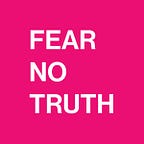Ends, Ways & Means: The Three Key Parts Of A Killer Brand Battle Plan
Crafting a killer brand plan is pivotal for businesses aiming to navigate and achieve growth in a competitive market. This plan is the strategic approach a business will take to achieve its goals, centering around three fundamental elements: ends, ways, and means.
The “ends” of a brand plan refer to the specific objectives or goals that the brand aims to achieve. These are not just any goals; they are carefully considered aspirations that resonate with the brand’s core values and mission. For a brand, the ends could range from increasing market share, enhancing customer loyalty, to repositioning in the market to adapt to changing consumer behaviors. Setting clear, measurable, and achievable goals is crucial. These goals provide a target for the organization to aim for, offering a sense of direction and purpose. It’s important that these objectives are ambitious yet realistic, pushing the organization to stretch its capabilities while still remaining attainable.
The “ways” refer to the strategies and approaches the brand will employ to achieve its ends. This involves a deep understanding of the brand’s strengths, weaknesses, opportunities, and threats (SWOT analysis). Strategies could involve differentiating the brand through unique selling propositions, leveraging technology for better customer experiences, or adopting a more sustainable business model to appeal to environmentally conscious consumers. The ways should be innovative, align with the brand’s values, and be flexible enough to adapt to market changes. Effective strategies are customer-centric, ensuring that every decision made serves to enhance the value provided to the target audience. They are the roadmap that outlines how the brand intends to move from its current state to its desired future state.
The “means” are the resources and tools that the brand will leverage to execute its strategies. This encompasses everything from the financial resources allocated for marketing initiatives, the human capital within the organization, to the technological tools that will be used to gather data and insights or improve customer engagement. The means also include the channels through which the brand communicates with its audience, such as social media, traditional advertising, or content marketing. Selecting the right mix of resources is essential for the successful execution of the brand plan. It requires a thorough assessment of the brand’s capabilities and a strategic allocation of resources to ensure that the strategies can be effectively implemented.
A killer brand plan is one that achieves a harmonious balance between the ends, ways, and means. It starts with a clear vision of what the brand aims to achieve. This vision then informs the development of creative and strategic ways to reach these objectives, utilizing the means available to the brand in the most efficient and effective manner. Execution is key. A plan, no matter how well-crafted, is only as good as its implementation. Regular monitoring and evaluation are essential to ensure that the brand is on track to meet its objectives. This involves setting key performance indicators (KPIs) for each goal and regularly measuring progress against these indicators. Feedback loops should be established to gather insights from the execution of the plan, allowing for adjustments and optimizations to be made in real-time.
The development of a killer brand plan also requires a deep understanding of the brand’s audience. This means going beyond demographics to understand the motivations, preferences, and behaviors of the target market. A brand plan that is rooted in a deep understanding of the target audience is more likely to resonate and achieve its objectives. Engaging with the audience through meaningful interactions and building relationships is crucial for a brand looking to make a lasting impact.
Innovation should be at the heart of the brand plan. In a rapidly changing market, brands that are able to innovate and adapt are the ones that thrive. This means being open to new ideas, experimenting with new approaches, and being willing to pivot when necessary. A killer brand plan is not static; it is a living document that evolves with the brand and its environment.
The integration of digital technology is another critical component of a modern brand plan. Digital channels offer unprecedented opportunities for brands to reach and engage with their audience. A digital-first approach ensures that the brand remains relevant and accessible to its target market. However, it’s important that digital strategies are integrated with offline efforts to create a cohesive brand experience.
In short, the development of a killer brand plan requires a strategic alignment of ends, ways, and means. It starts with setting clear and achievable objectives, developing innovative strategies to reach these goals, and leveraging the right mix of resources for execution. A successful brand plan is customer-centric, adaptable, and continuously optimized based on feedback and performance data. It integrates digital technology and is rooted in a deep understanding of the target audience. By focusing on these elements, brands can navigate the complexities of the market and achieve sustainable growth and success.
